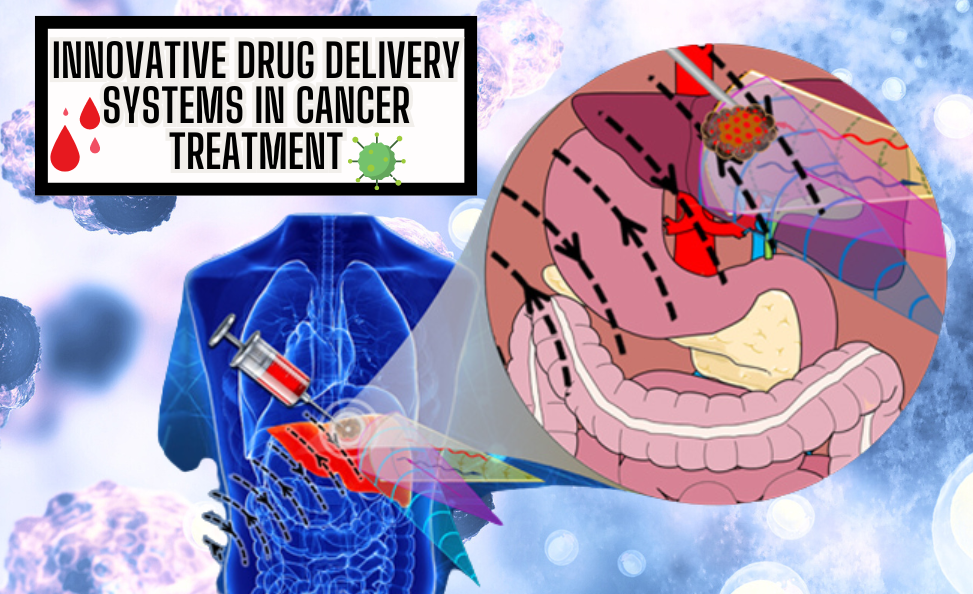BLOG
Innovative Drug Delivery Systems in Cancer Treatment

Cancer treatment has long been a challenging and evolving field, with researchers continually seeking more effective and less harmful ways to combat the disease. Traditional methods such as chemotherapy and radiation therapy, while often effective, can have significant side effects due to their impact on healthy cells. In recent years, innovative drug delivery systems have emerged, revolutionizing the landscape of cancer treatment. These advancements aim to increase the precision, efficacy, and safety of therapies, ultimately improving patient outcomes and quality of life.
Nanotechnology in Cancer Treatment
One of the most promising areas in innovative drug delivery is nanotechnology. Nanoparticles can be engineered to deliver drugs directly to cancer cells, minimizing damage to surrounding healthy tissue. These tiny particles, often less than 100 nanometers in size, can be designed to recognize and bind to specific cancer cell markers. Once bound, they release their therapeutic payload directly into the cancer cells, thereby increasing the drug concentration at the target site and reducing systemic toxicity.
Benefits of Nanotechnology
- Targeted Delivery: Nanoparticles can be functionalized with ligands that specifically bind to cancer cell receptors, ensuring that the drug is delivered precisely where it is needed.
- Reduced Side Effects: By sparing healthy cells, nanoparticles reduce the adverse effects commonly associated with traditional chemotherapy.
- Enhanced Drug Solubility: Many anticancer drugs are poorly soluble in water. Nanoparticles can improve their solubility, enhancing their bioavailability and effectiveness.
Liposomes: A Versatile Delivery System
Liposomes, spherical vesicles composed of lipid bilayers, have been extensively studied and used in cancer treatment. These vesicles can encapsulate both hydrophilic and hydrophobic drugs, providing a versatile platform for drug delivery. Liposomes can be modified with various ligands to target specific cancer cells and can also carry imaging agents for diagnostic purposes.
Benefits of Liposomes
- Biocompatibility: Liposomes are made from natural phospholipids, making them biocompatible and less likely to provoke an immune response.
- Controlled Release: The lipid bilayer structure allows for controlled release of the encapsulated drug, maintaining therapeutic levels over extended periods.
- Reduced Toxicity: By encapsulating drugs within liposomes, the direct exposure of healthy cells to toxic agents is minimized.
Polymer-Based Delivery Systems
Polymers offer another exciting avenue for innovative drug delivery in cancer treatment. These systems can be designed to respond to specific physiological conditions, such as pH or temperature changes, ensuring that the drug is released only in the desired environment. Biodegradable polymers are particularly attractive as they degrade into non-toxic byproducts after delivering their payload.
Benefits of Polymer-Based Systems
- Stimuli-Responsive Release: Polymers can be engineered to release drugs in response to specific triggers, such as the acidic environment of a tumor.
- Prolonged Circulation: Polymer-based nanoparticles can evade the immune system, allowing them to circulate in the bloodstream for longer periods and increasing the chances of reaching the tumor site.
- Combination Therapy: Polymers can encapsulate multiple drugs, enabling combination therapies that can simultaneously attack cancer through different mechanisms.
Immunotherapy and Drug Delivery
Immunotherapy, which harnesses the body’s immune system to fight cancer, has shown tremendous promise. Innovative drug delivery systems are enhancing the effectiveness of immunotherapy by improving the delivery of immune-modulating agents. For example, nanoparticles can deliver checkpoint inhibitors directly to tumor sites, boosting the immune response against cancer cells.
Benefits of Enhanced Immunotherapy Delivery
- Improved Efficacy: Targeted delivery of immunotherapeutic agents ensures that they reach the tumor microenvironment, enhancing their effectiveness.
- Reduced Immune-Related Side Effects: By localizing the delivery, these systems minimize systemic immune activation, reducing side effects such as autoimmune reactions.
- Synergistic Effects: Combining immunotherapy with other targeted delivery systems can create synergistic effects, leading to better patient outcomes.
Challenges and Future Directions
While these innovative drug delivery systems hold great promise, several challenges remain. Ensuring the stability and scalability of these systems for widespread clinical use is crucial. Additionally, understanding the long-term effects and potential toxicity of these delivery systems is essential for their safe implementation.
Future Directions
- Personalized Medicine: The integration of drug delivery systems with personalized medicine approaches will tailor treatments to individual patient profiles, enhancing efficacy and minimizing side effects.
- Hybrid Systems: Combining different drug delivery platforms, such as nanoparticles and liposomes, can leverage the advantages of each, creating more robust and versatile treatment options.
- Advanced Imaging: Incorporating advanced imaging agents into drug delivery systems will enable real-time monitoring of treatment progress and allow for timely adjustments to therapy.
Conclusion
Innovative drug delivery systems are revolutionizing cancer treatment, offering more targeted, effective, and safer therapeutic options. Nanotechnology, liposomes, polymer-based systems, and enhanced immunotherapy delivery are paving the way for a new era in oncology. As research progresses and these technologies continue to evolve, the future of cancer treatment looks increasingly promising, with the potential to significantly improve patient outcomes and quality of life.More

